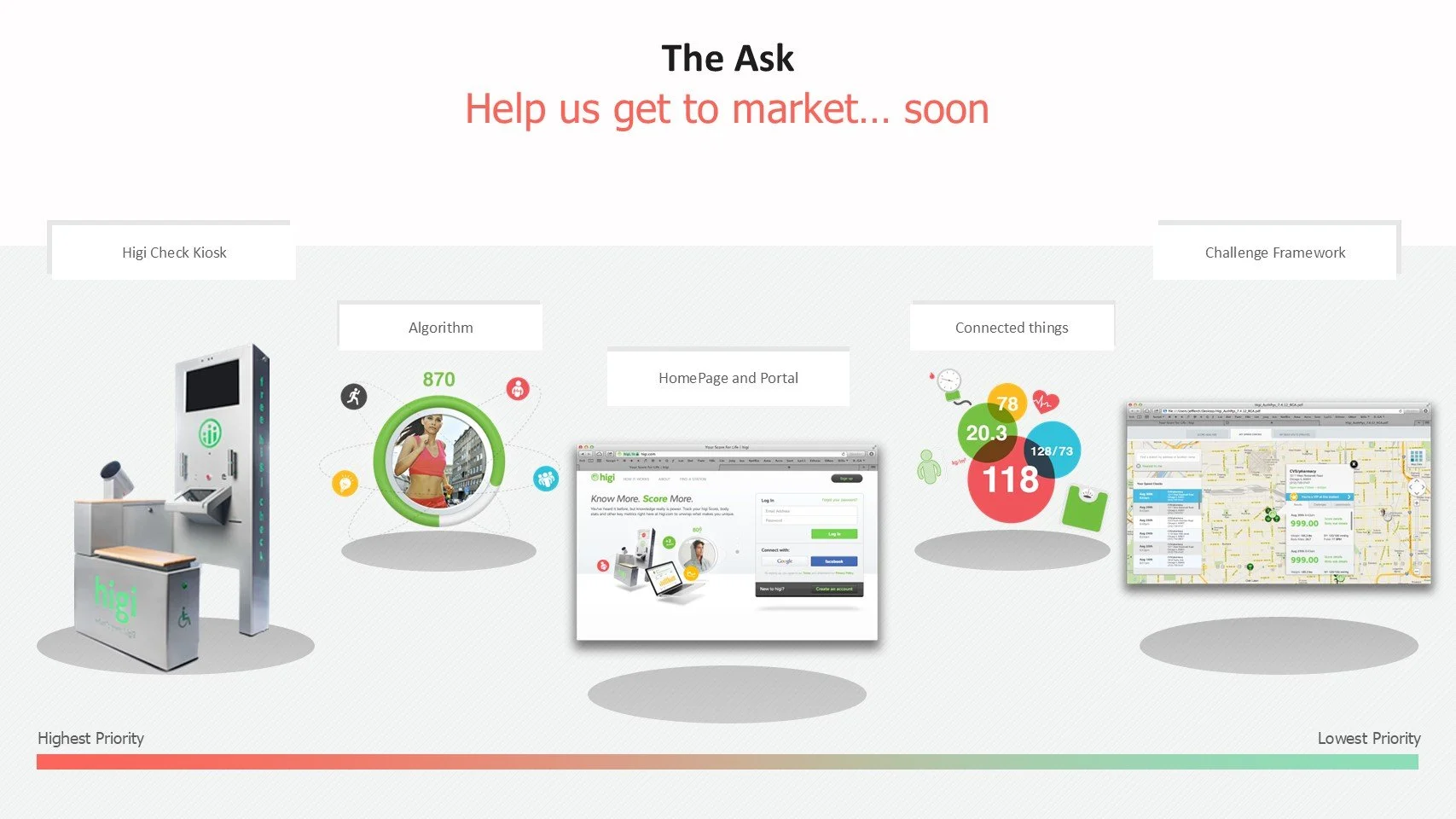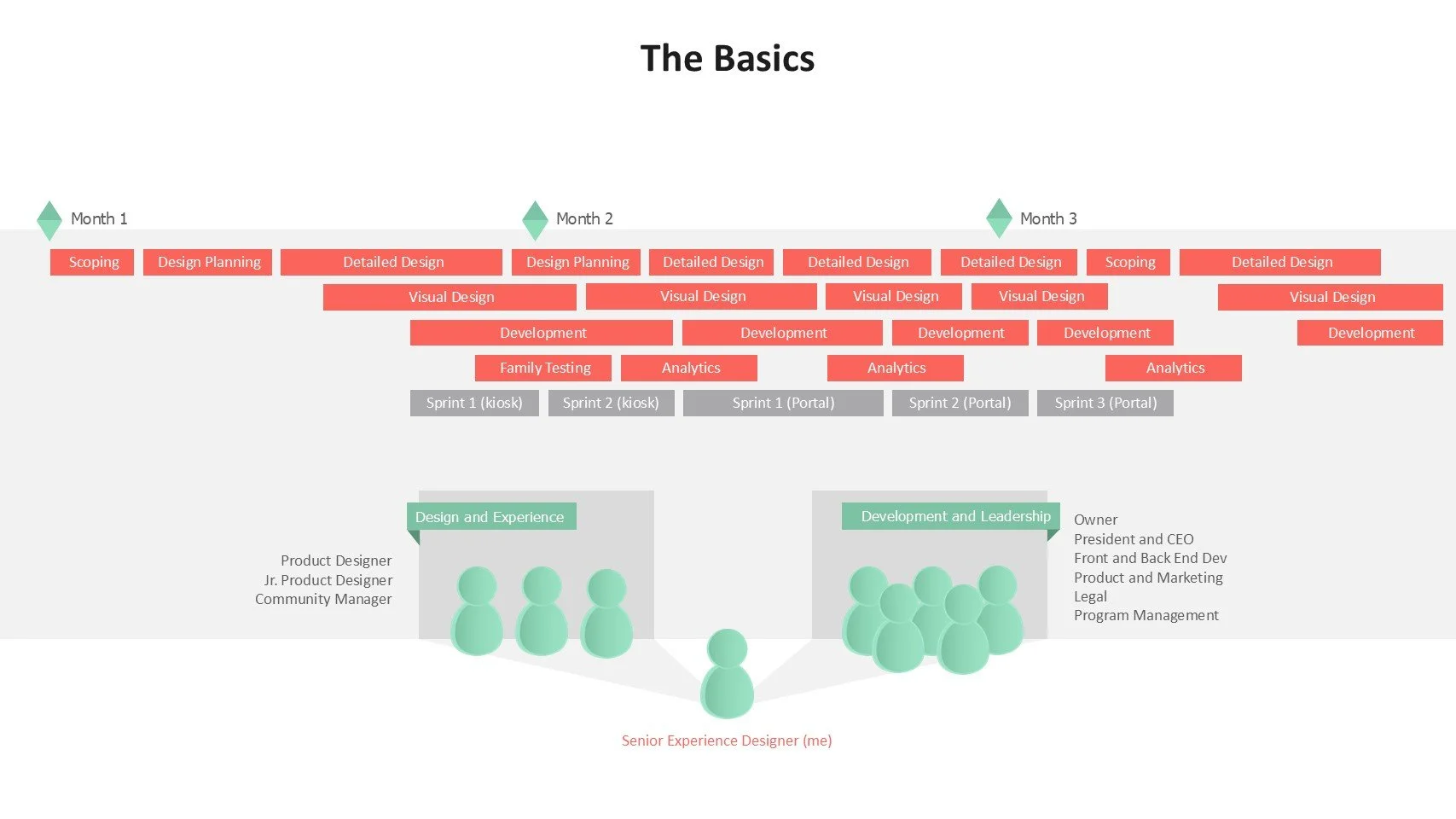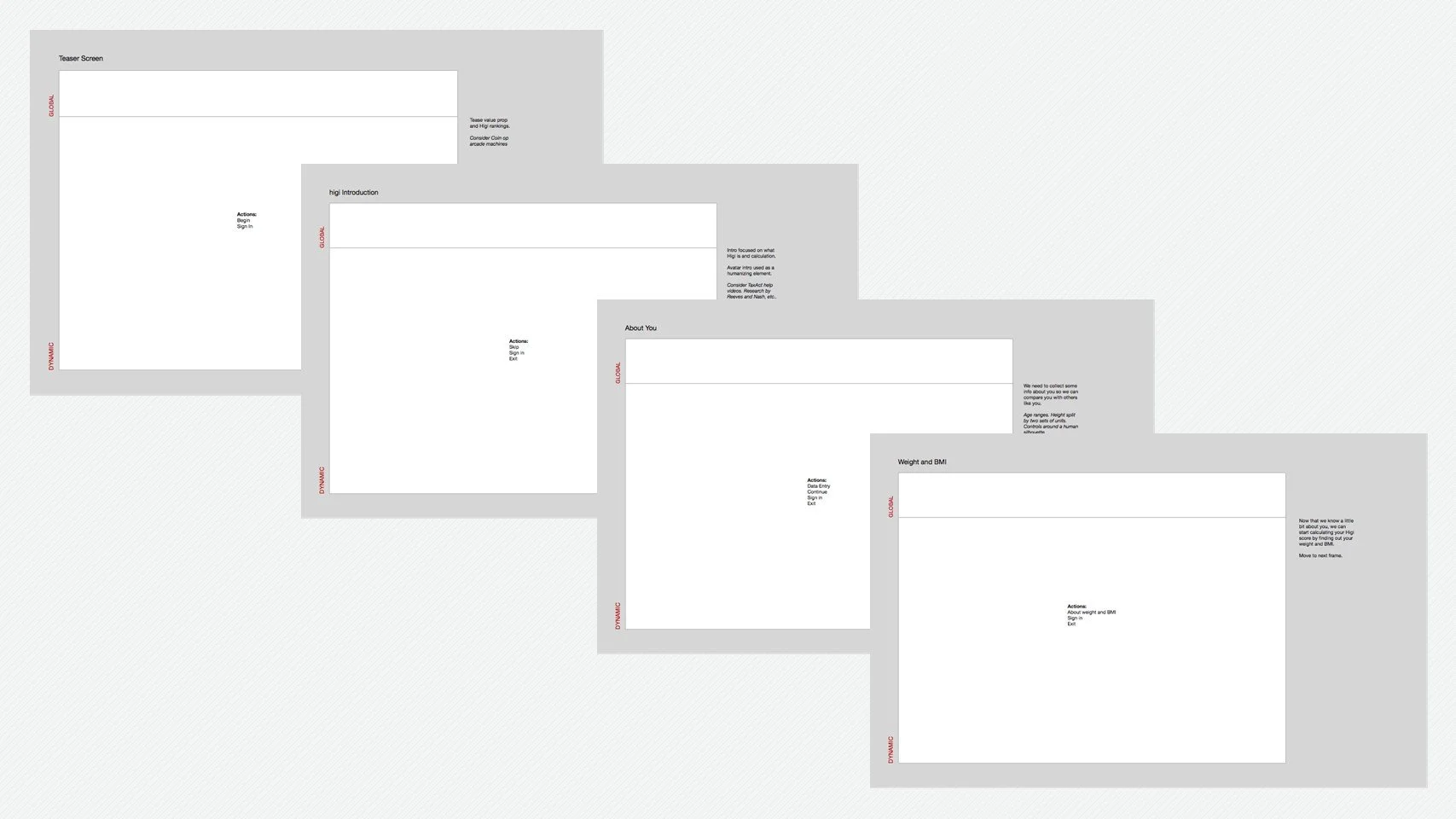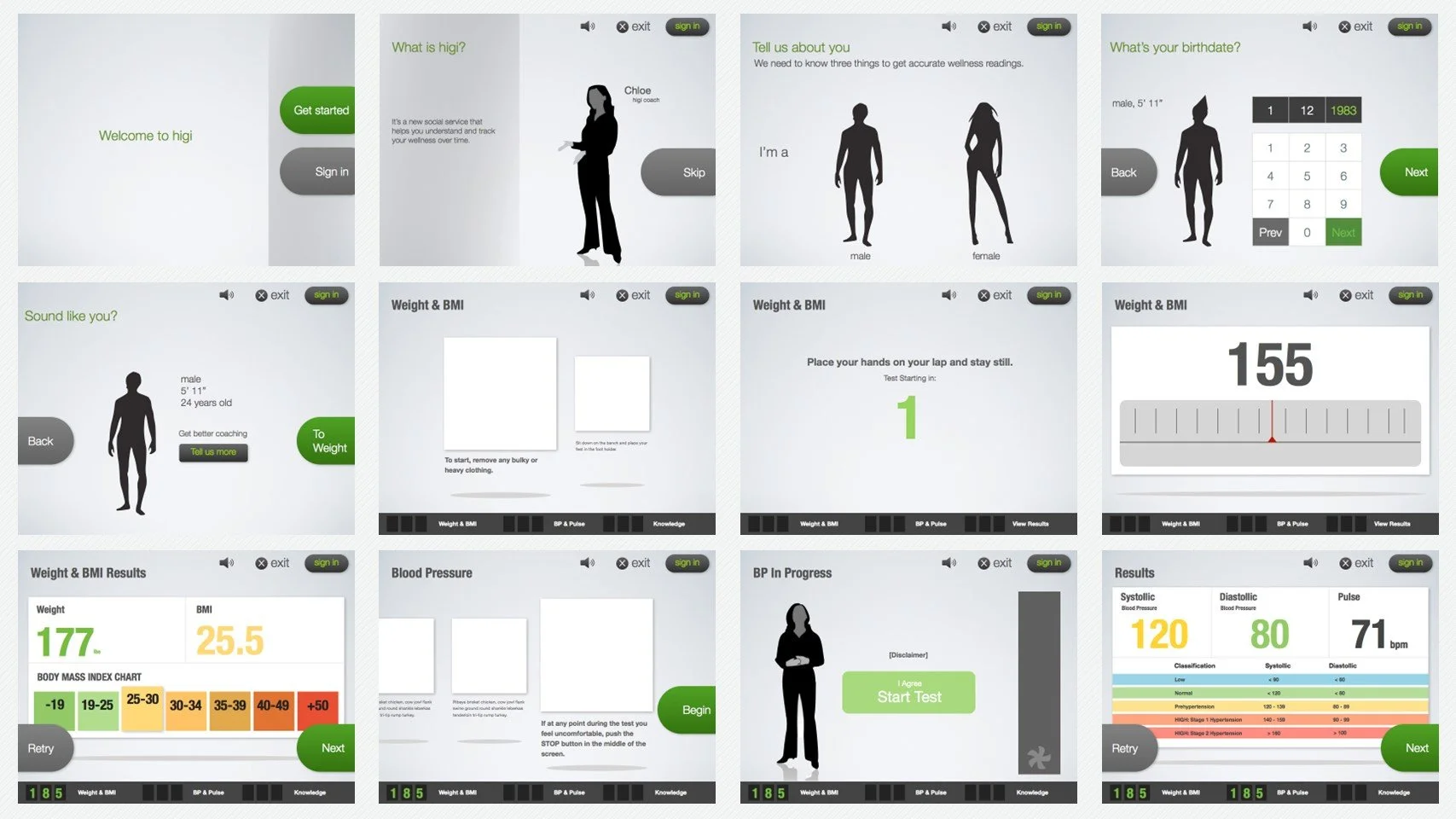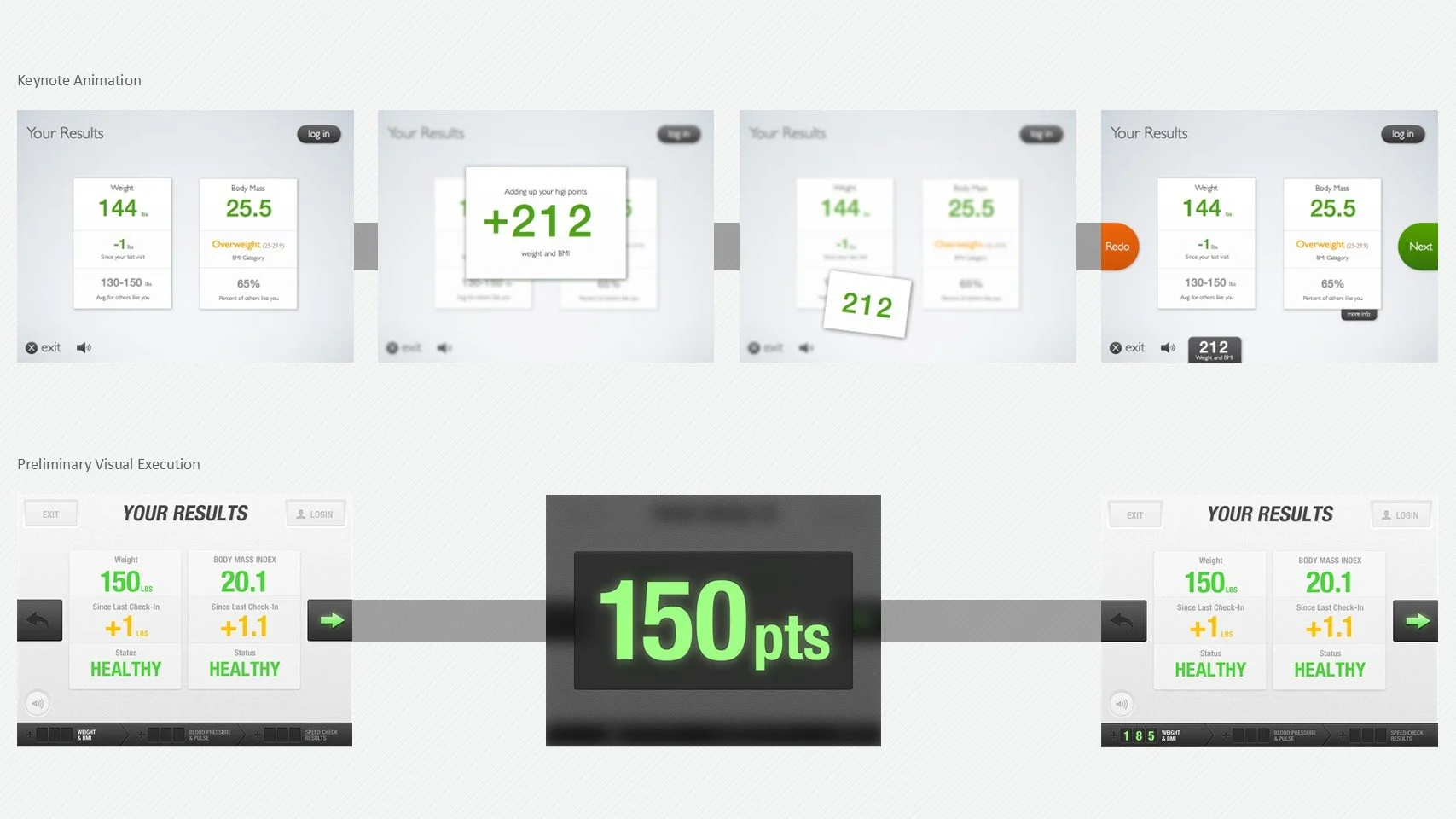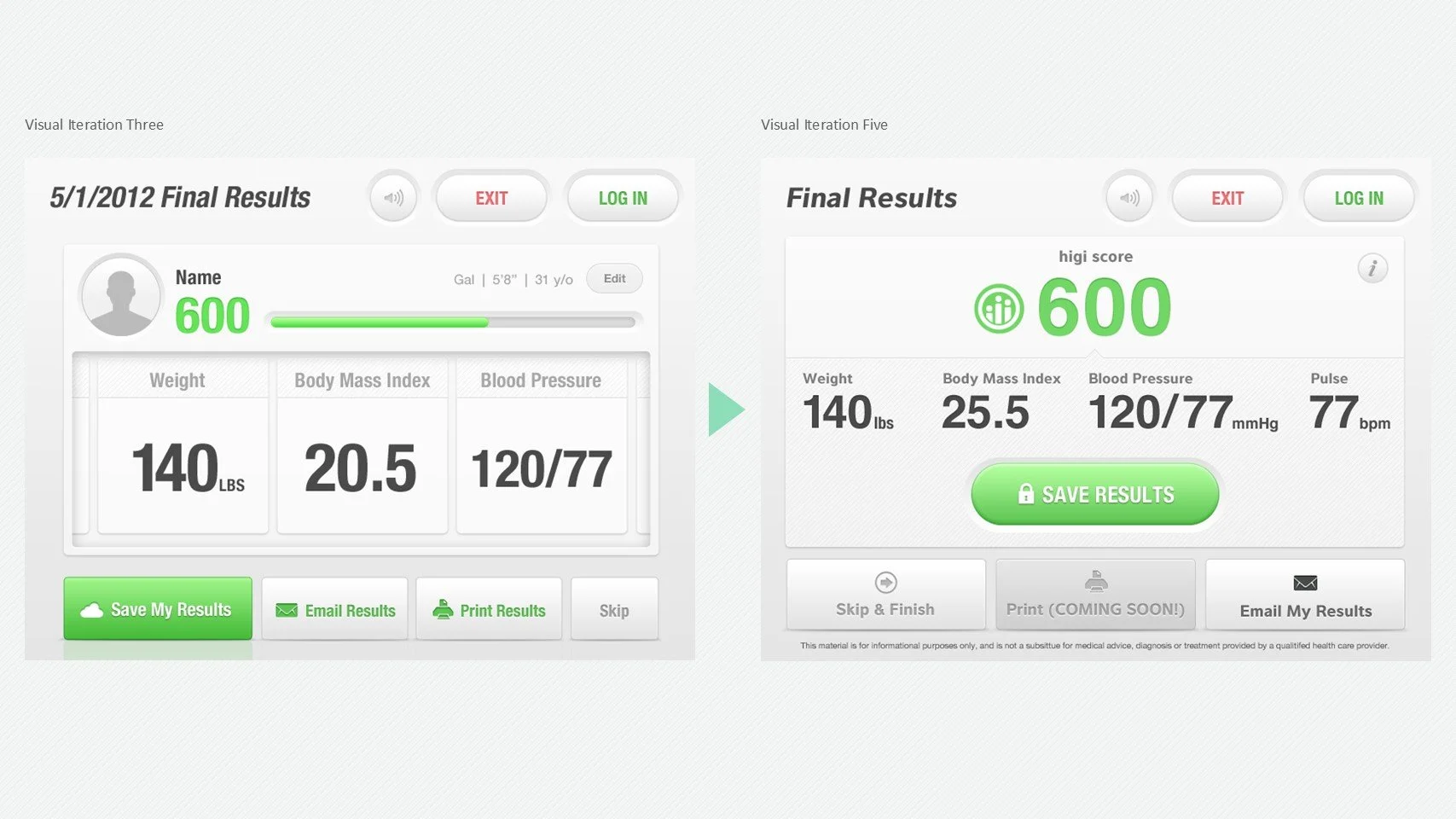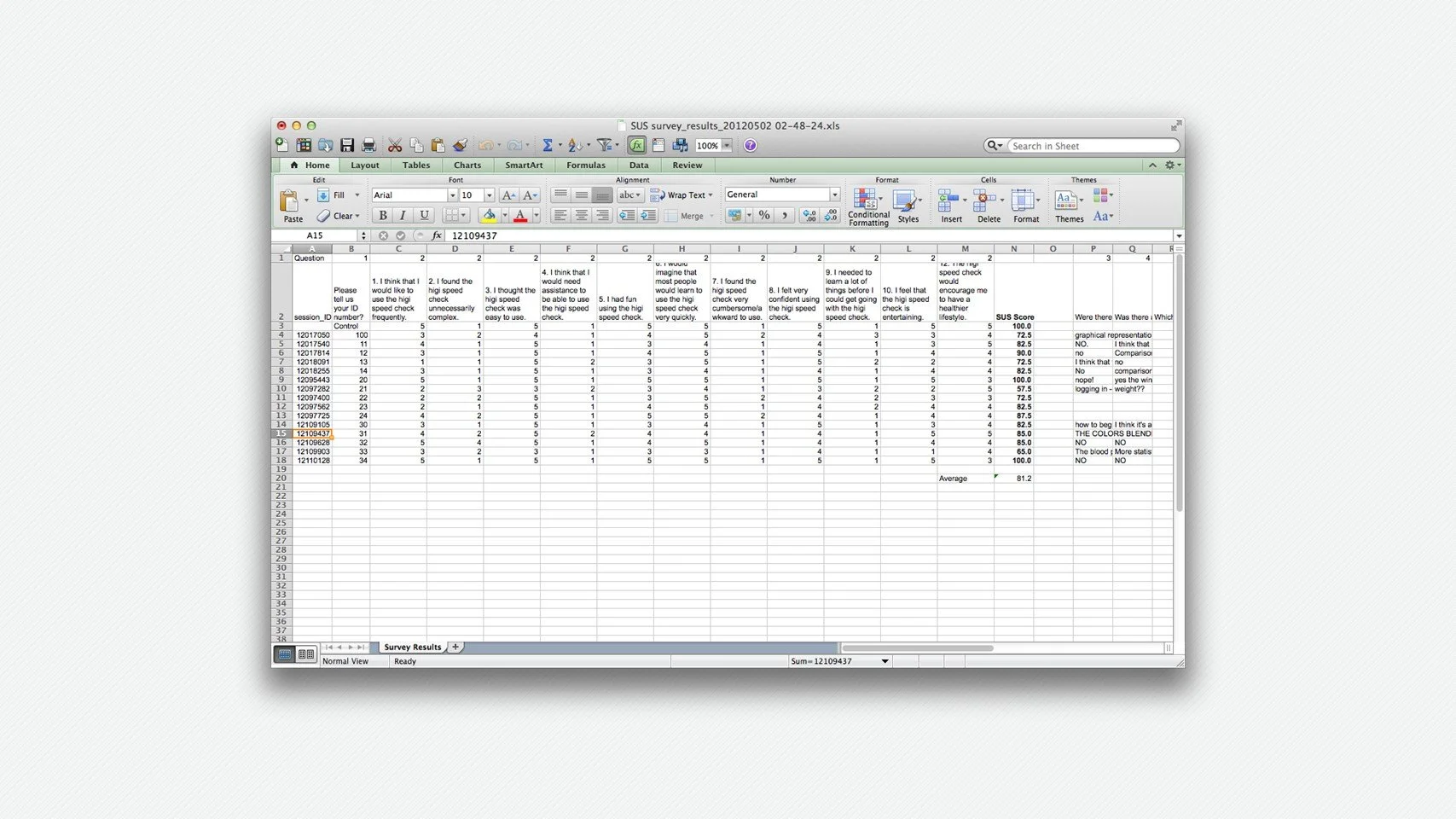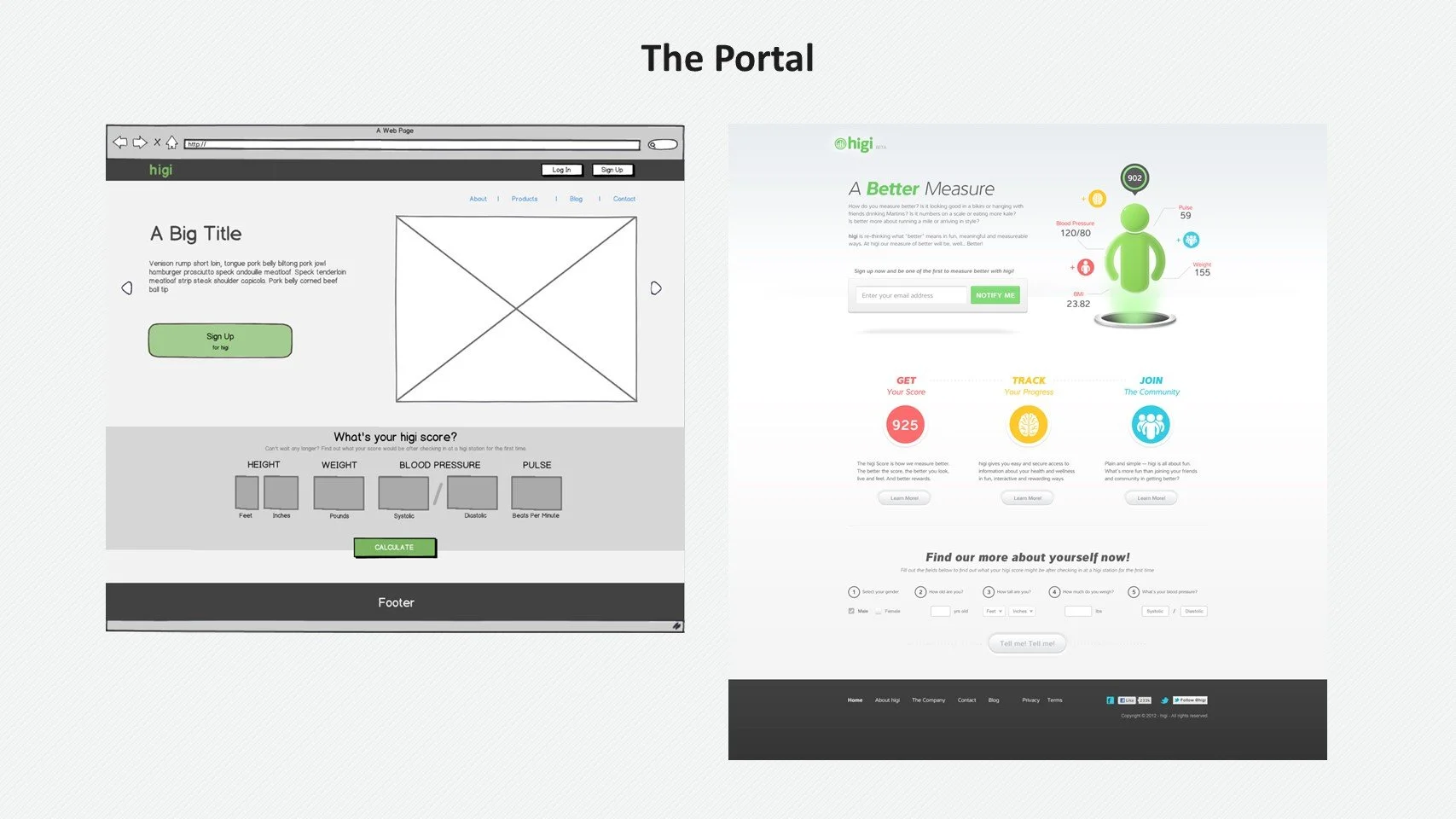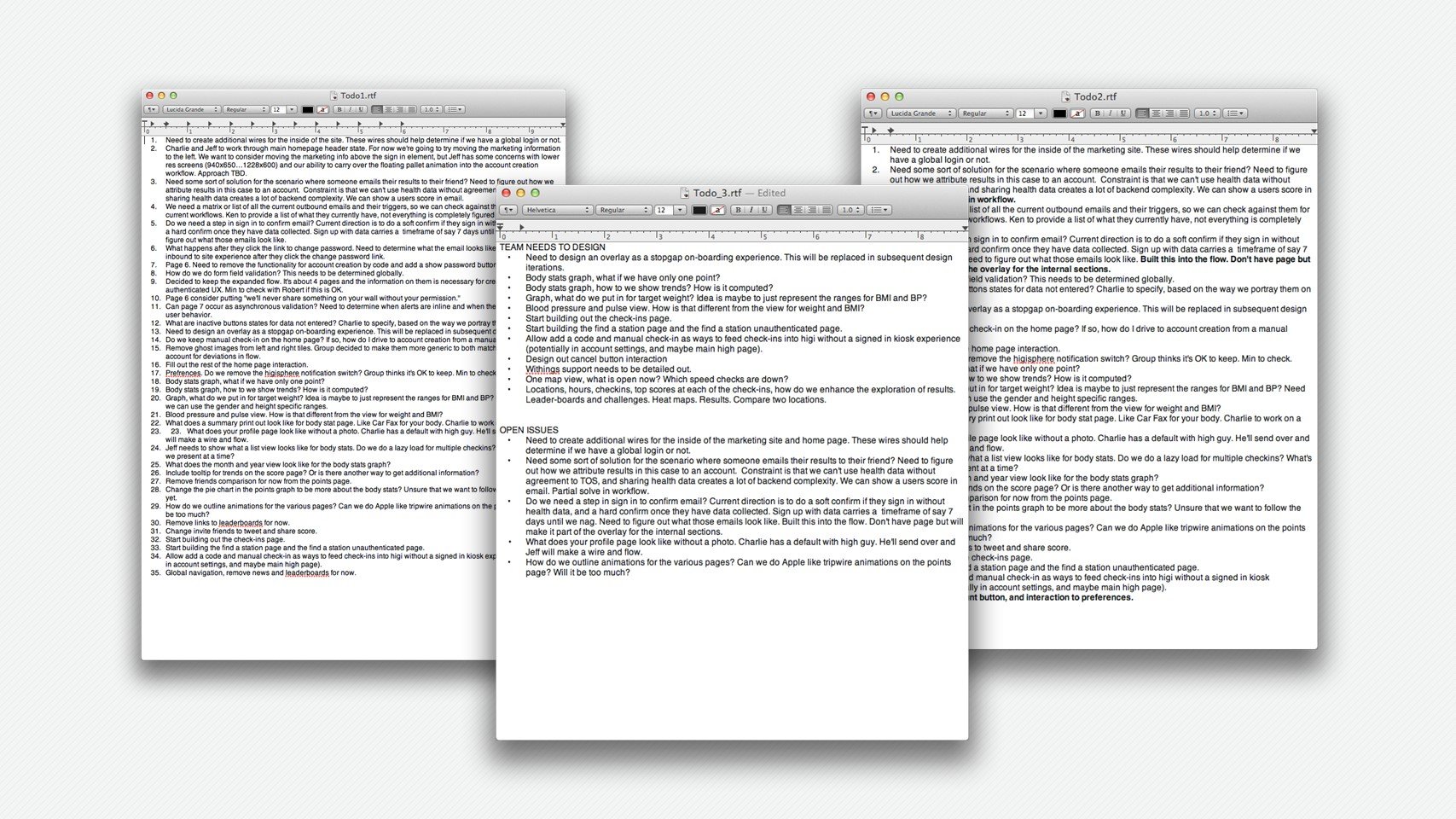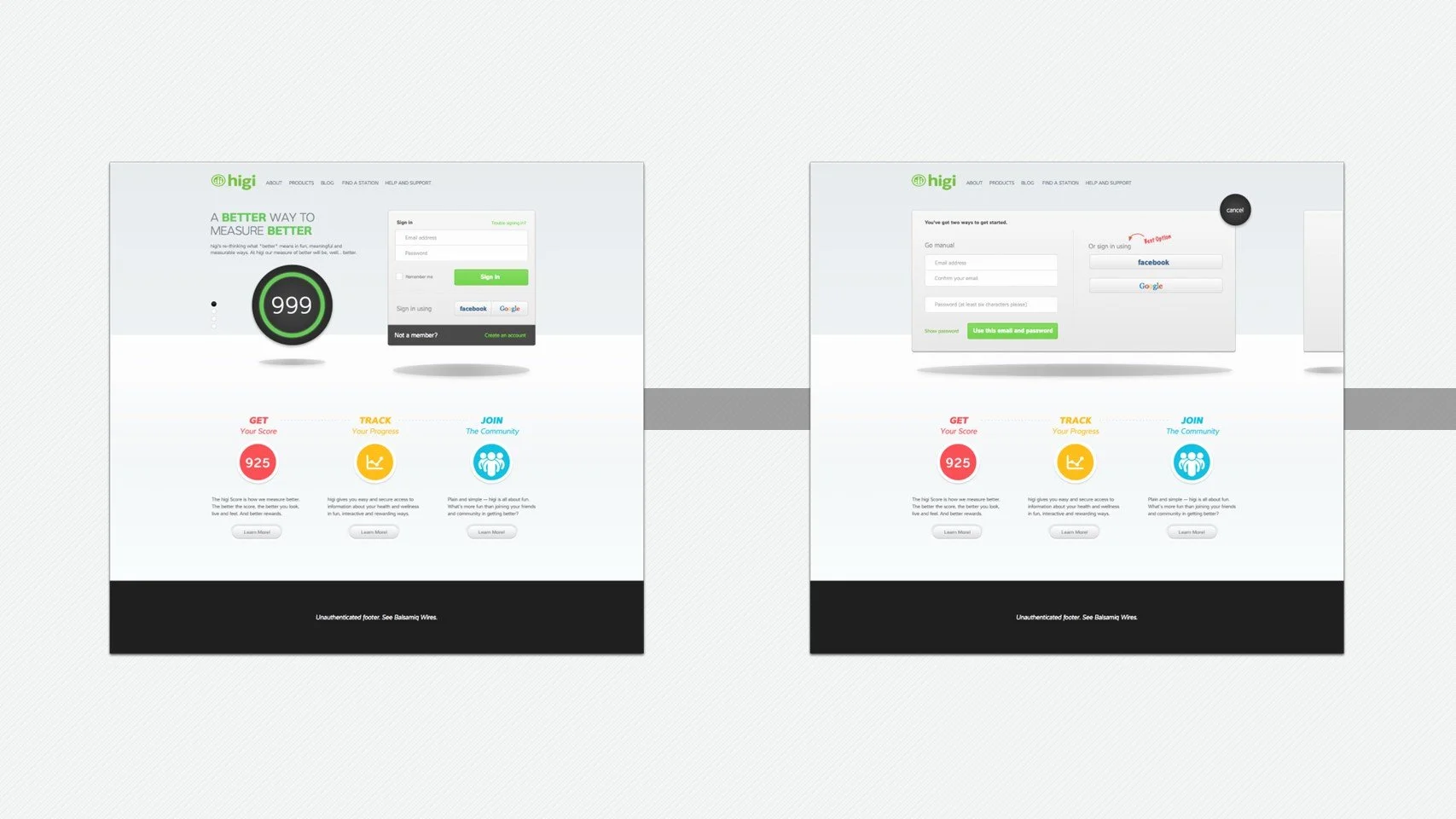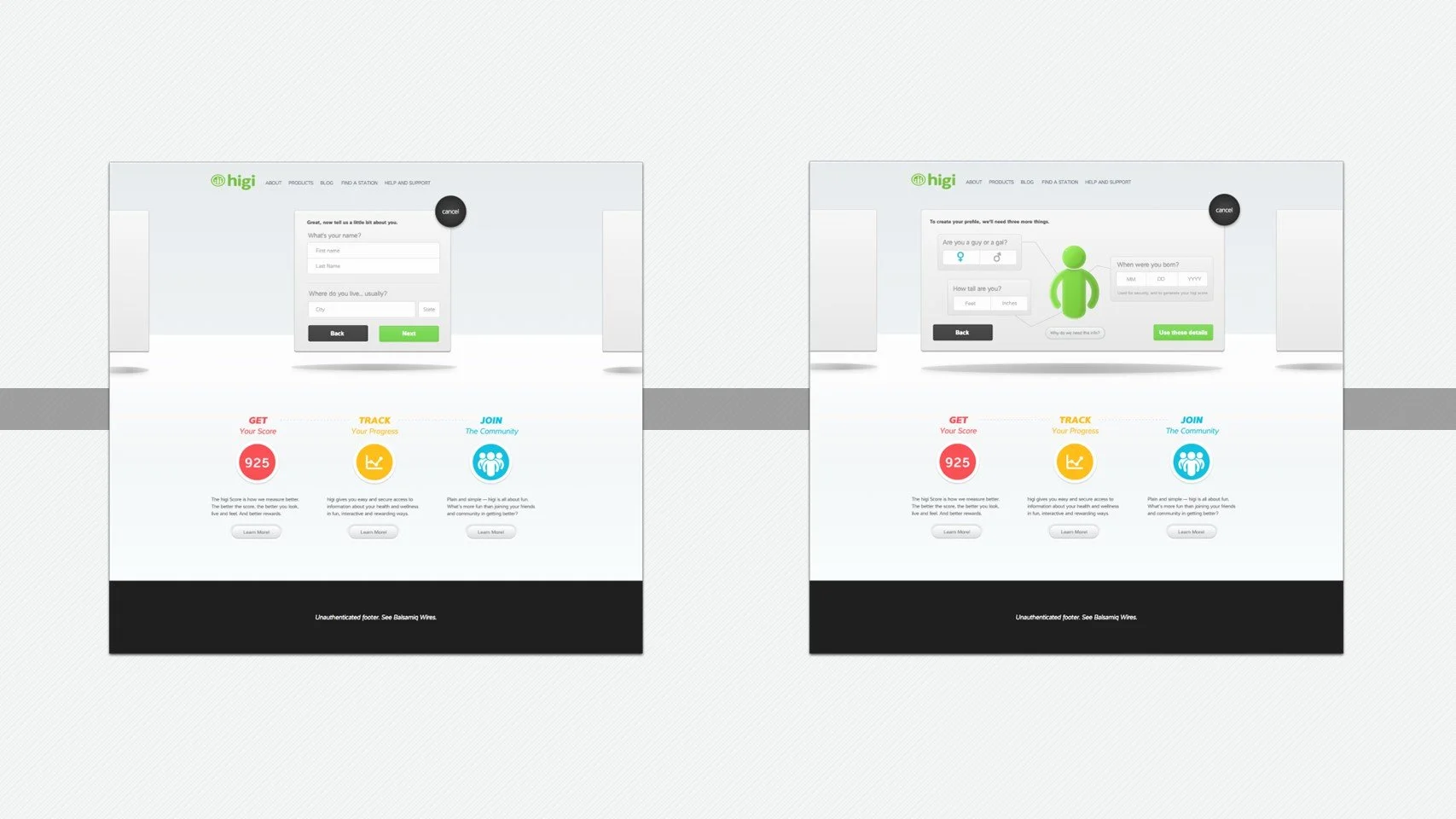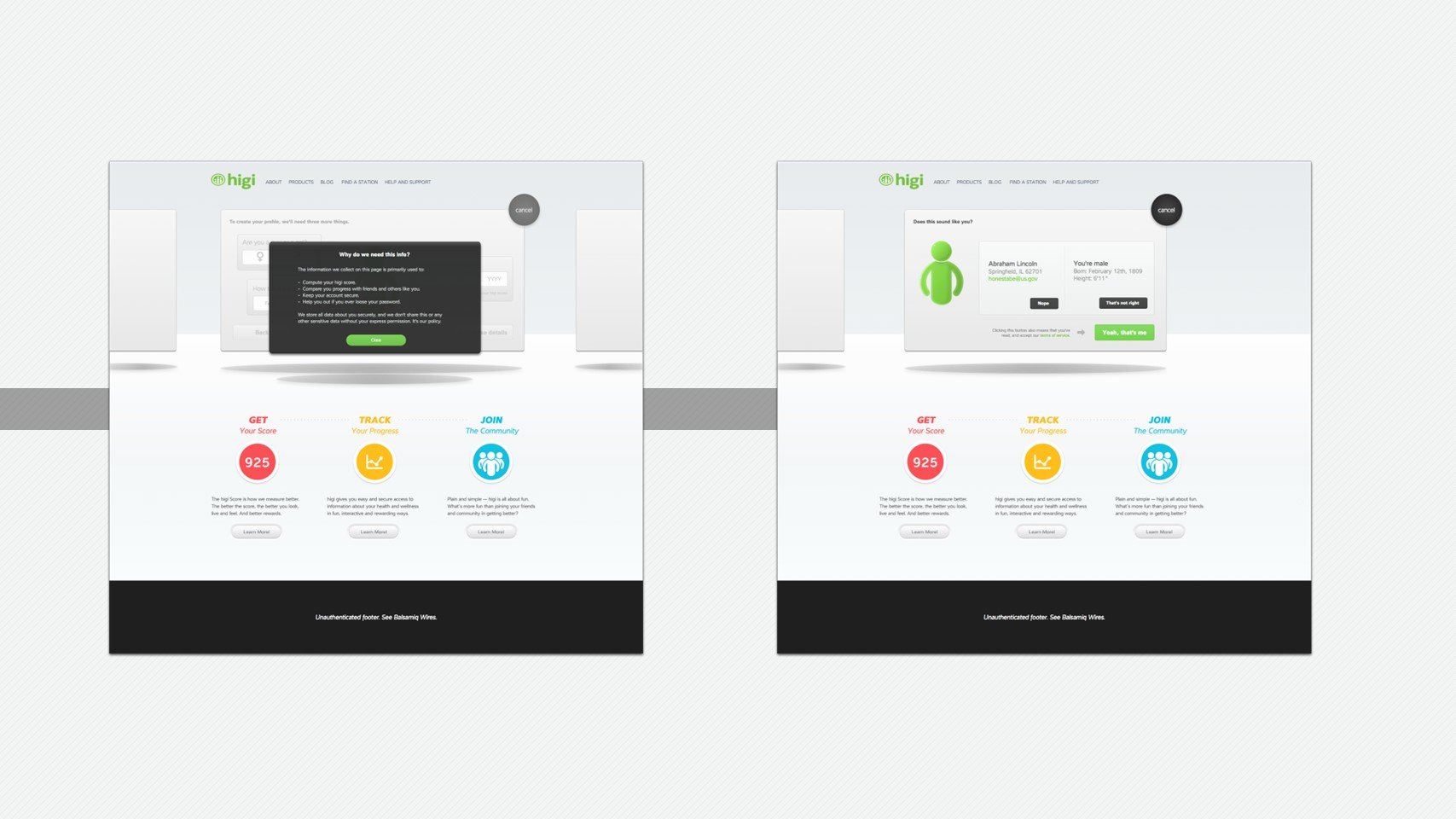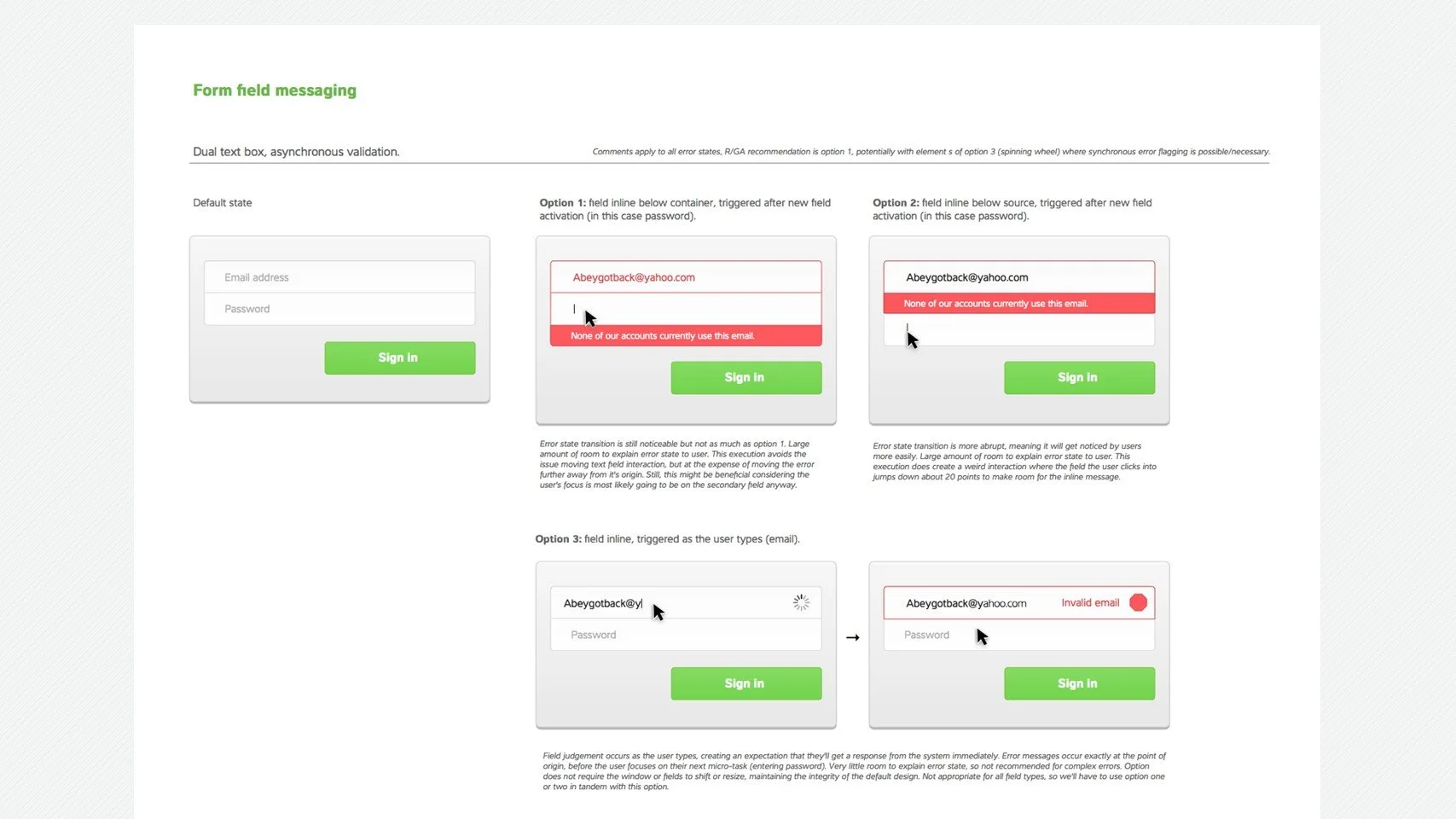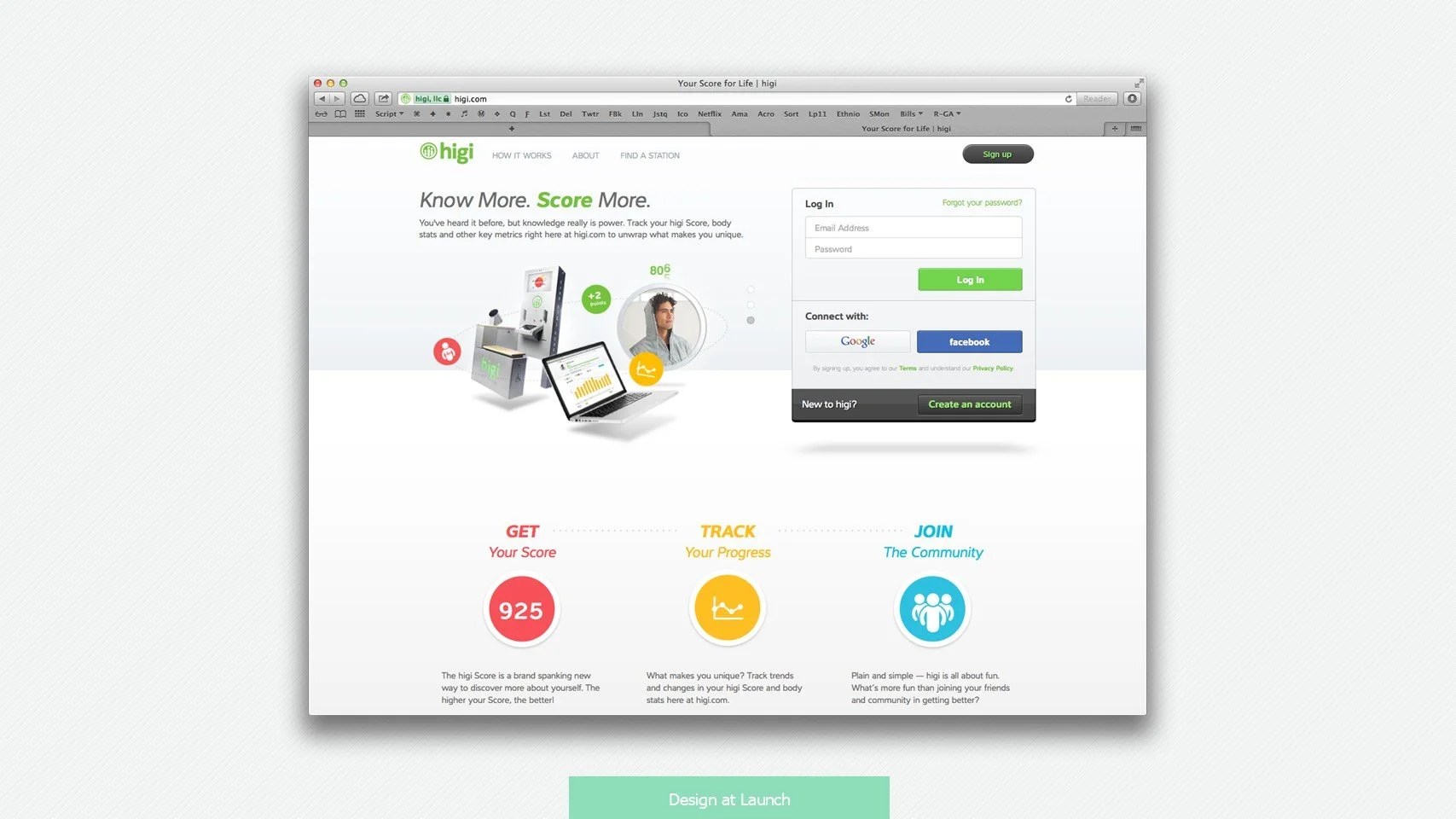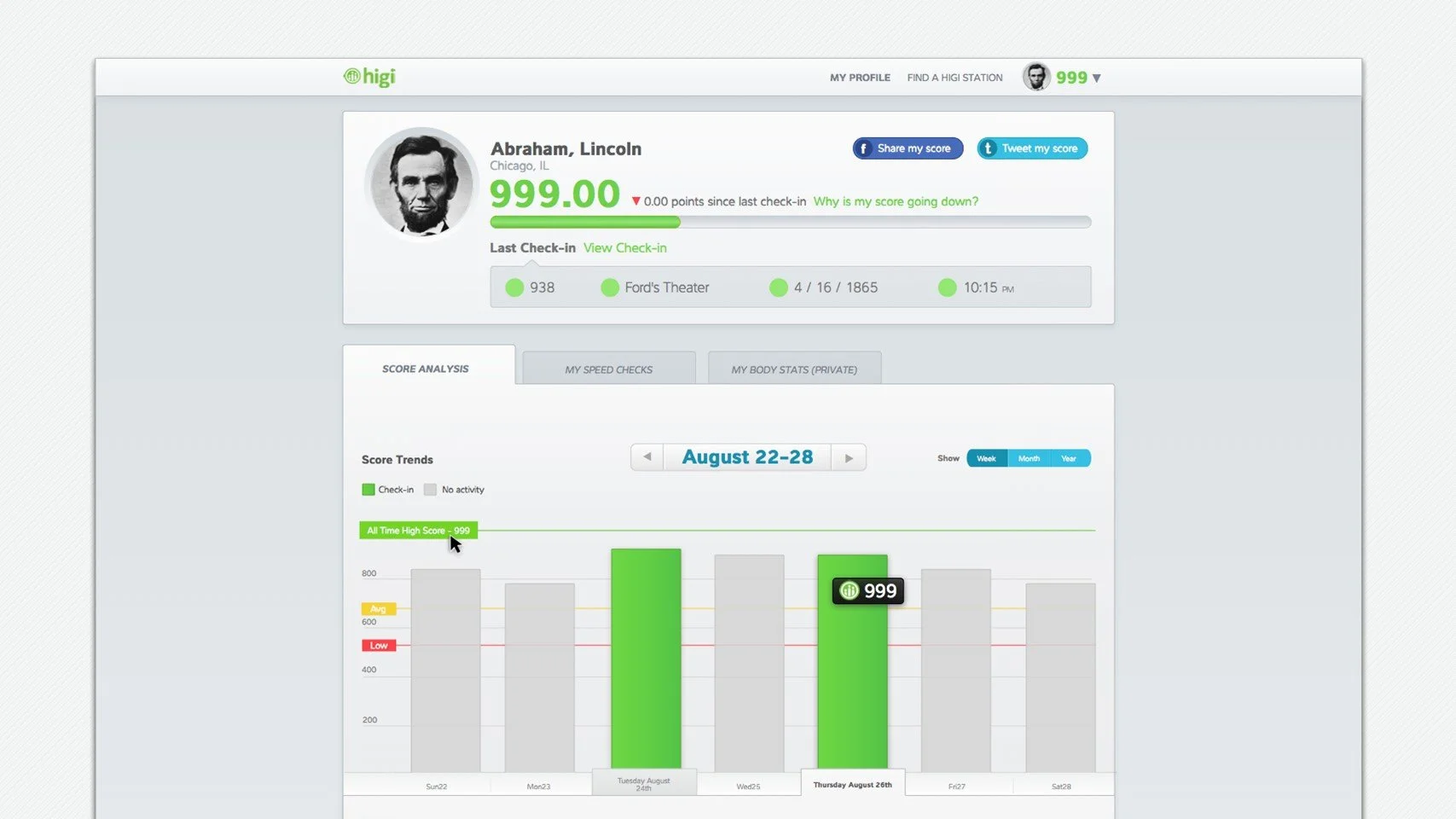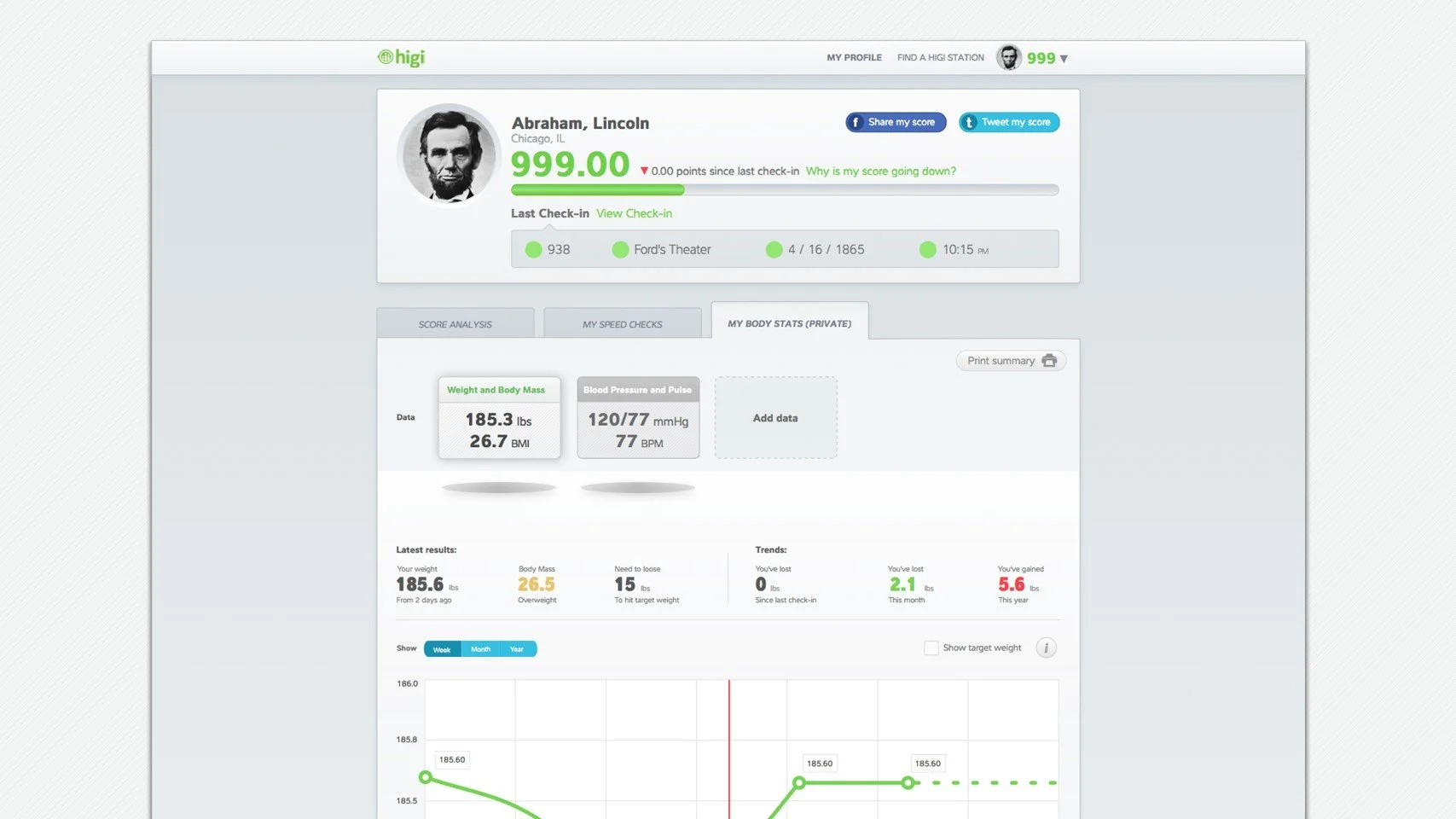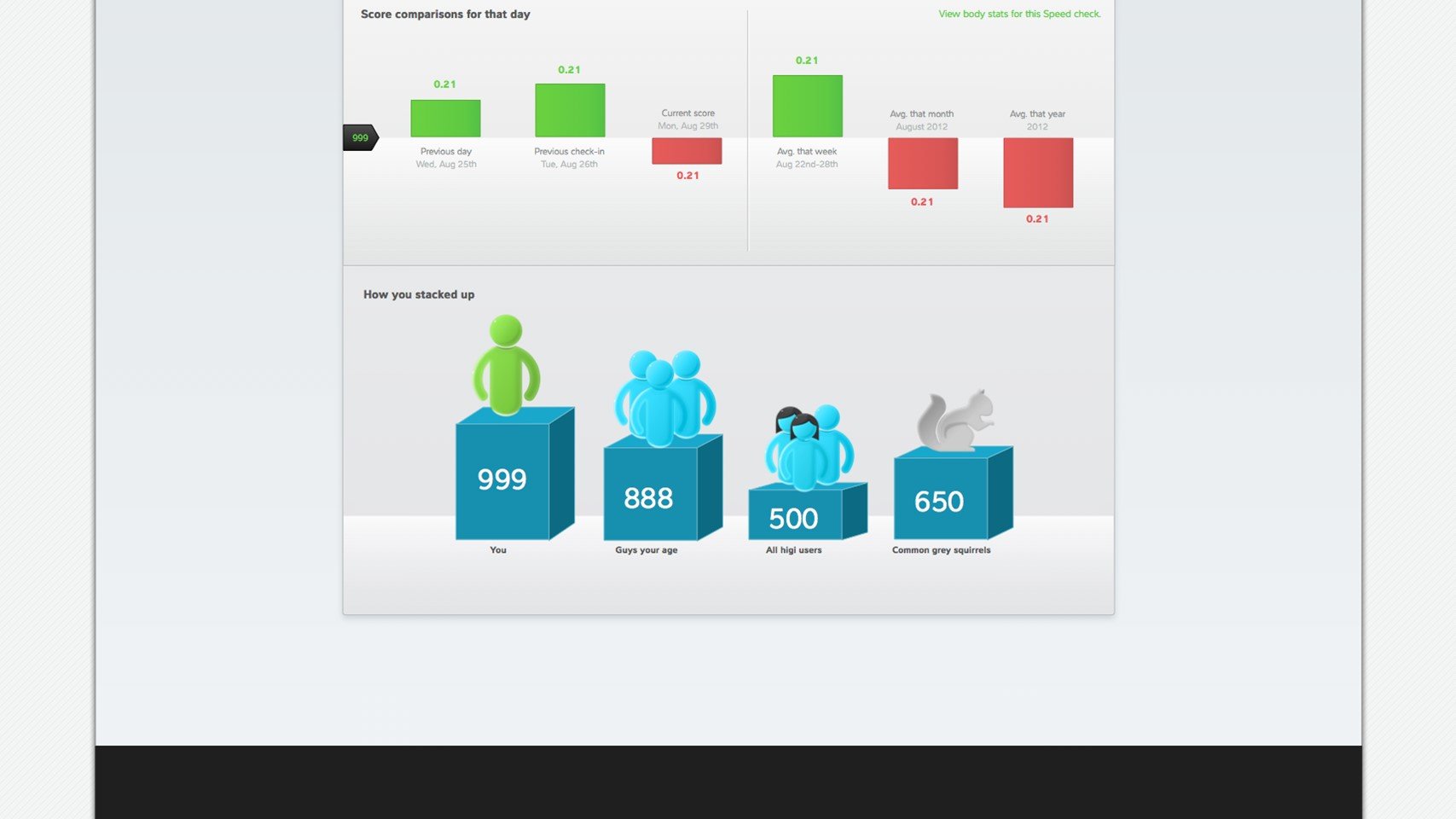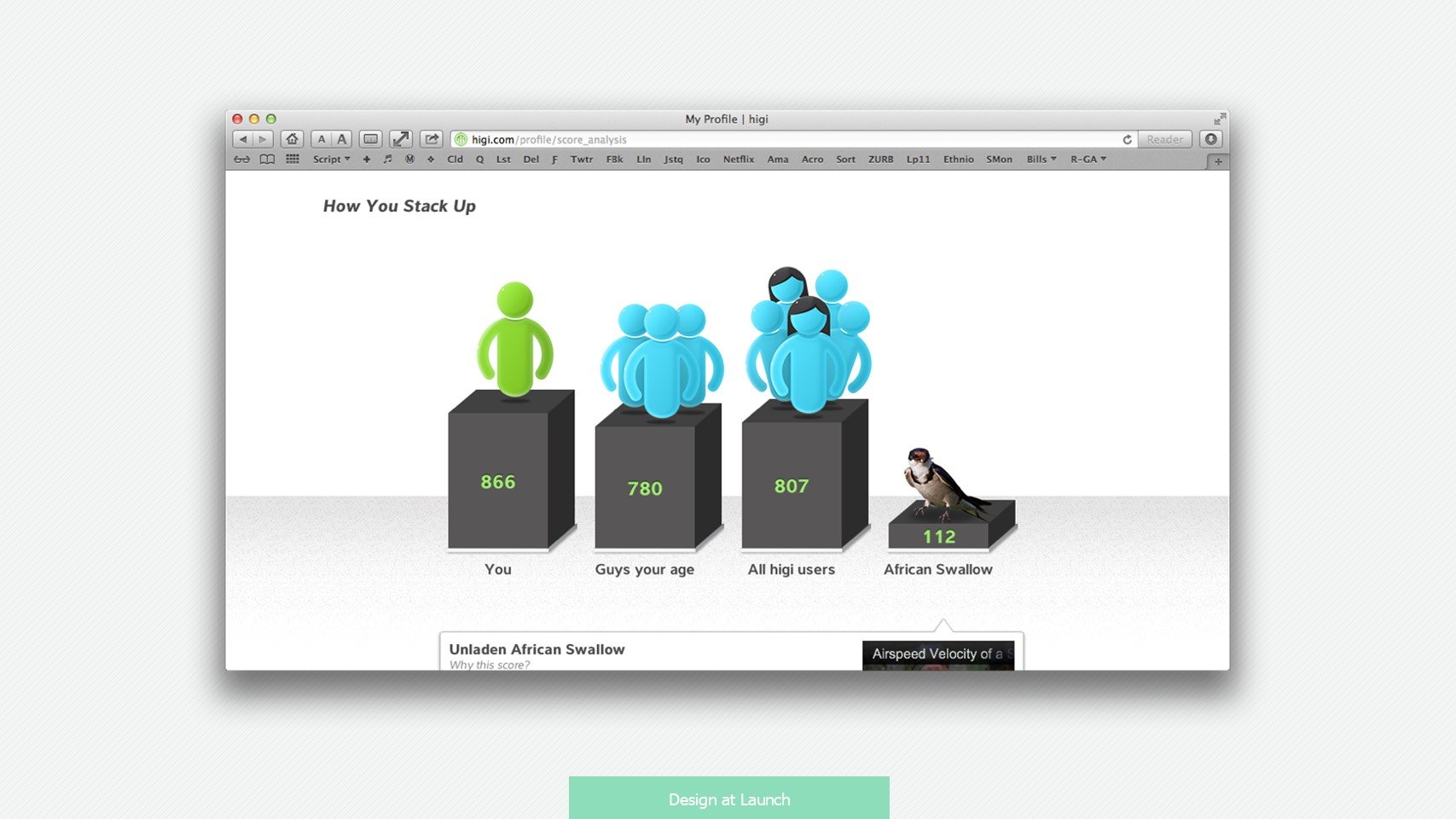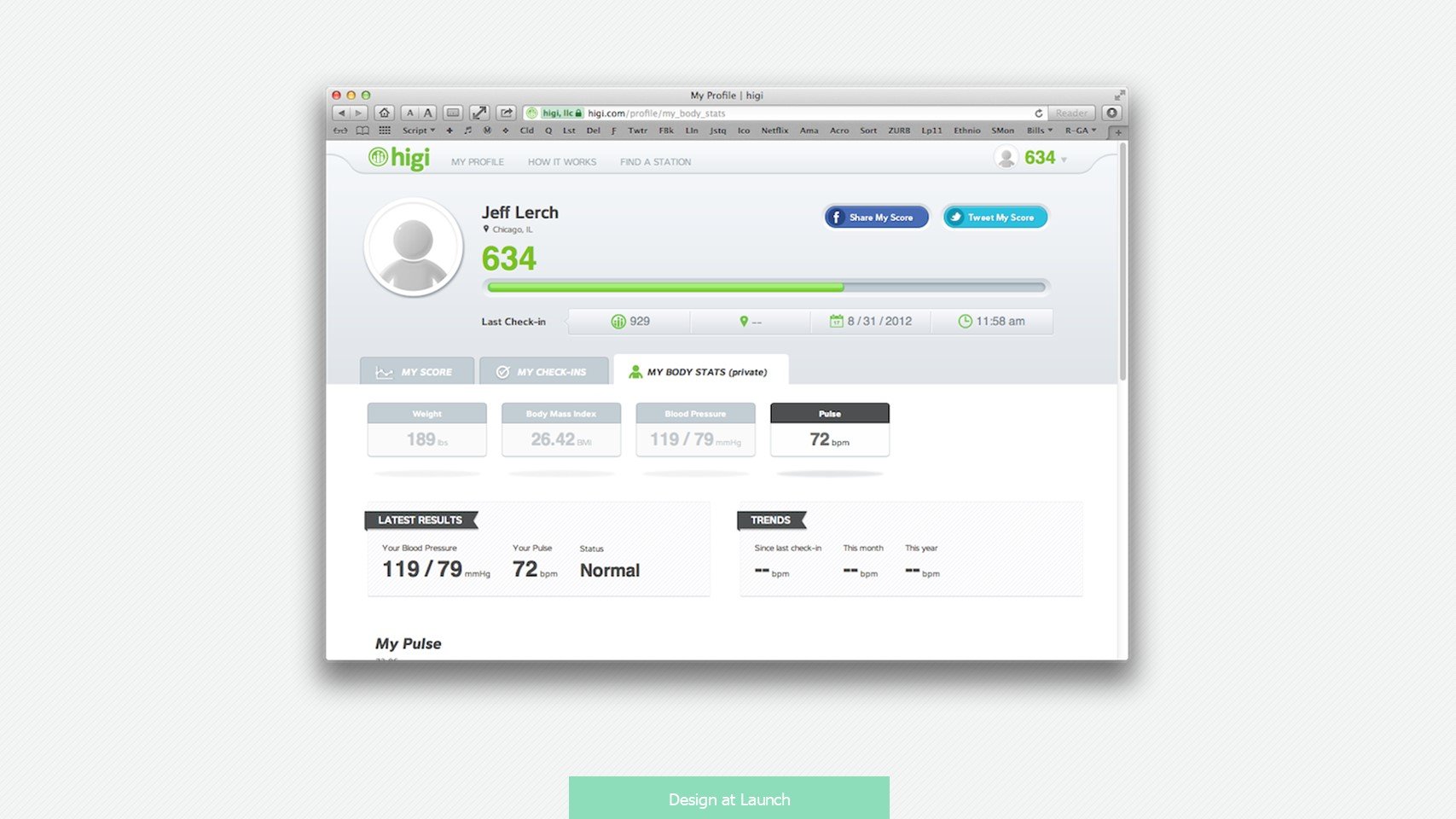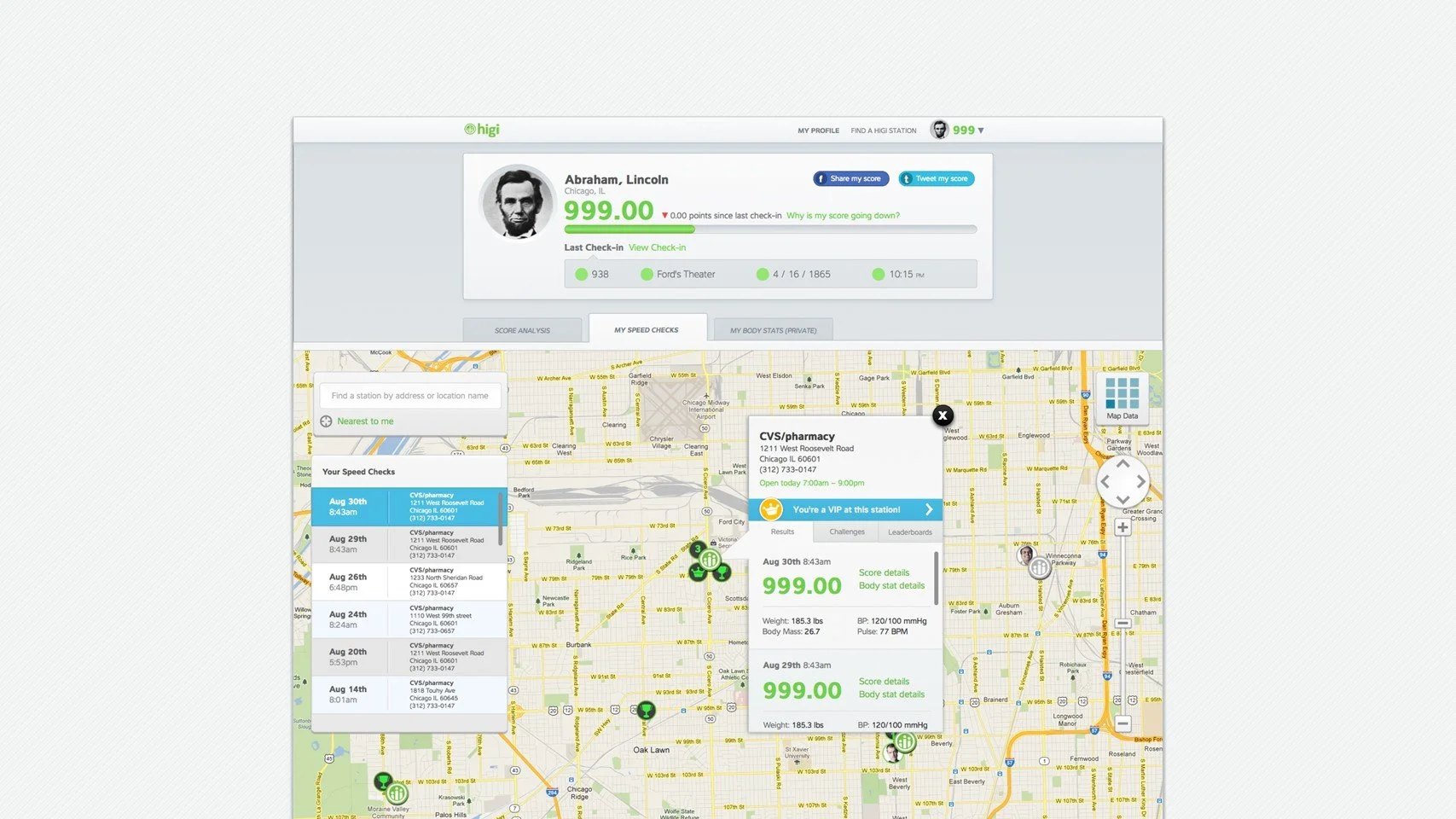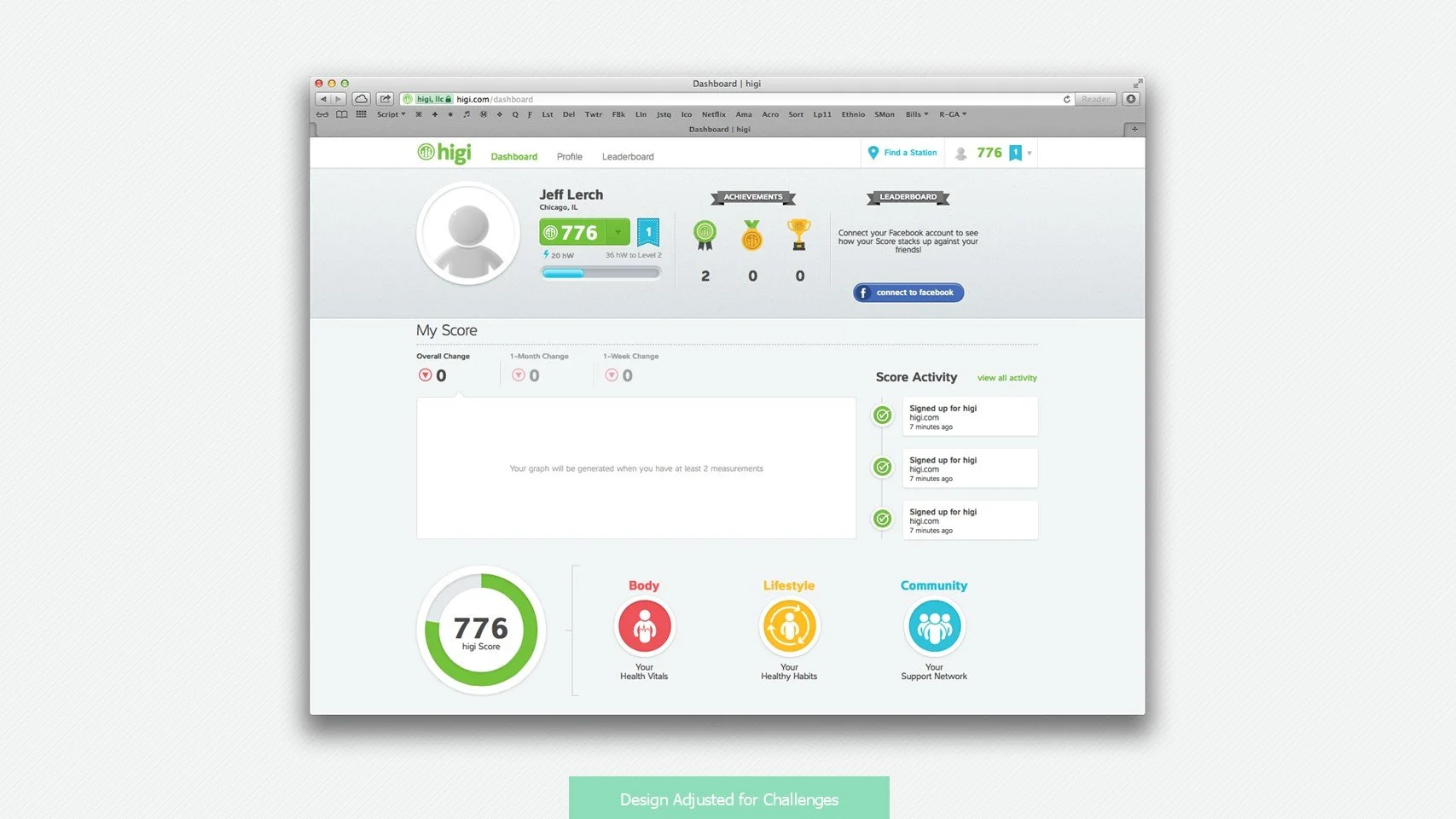Higi
Higi is a health and wellness service that seeks to provide people with a better way to track and achieve their personal well being. The service lets you collect and track you vital data through the use of higi stations (below), mobile apps, and other 3rd party devices. Community tools and challenges help keep you motivated and on track as you strive to achieve your "better."
What were we solving for
Higi came to us looking for help with the design of their health and wellness platform. Specifically, the team needed help with the design direction of their check-in kiosks, as well as the web portal that would support it and a number of other community features in the future. Work began on the kiosk system first because there was a hard stop on both the production and placement of kiosks in retail.
Time to launch was an essential component of the work, since the team had a number of early delivery obligations that they needed to meet in order to maintain funding and meet their profitability projections for the year.
Goals
Get Higi to market by finalizing product strategy and design in 5 key areas.
The Higi check kiosks
The Higi algorithm
Homepage and Portal Design
Support for connected things
Health challenges framework
The work
Leading the team
The Higi team already had a small, but talented, team of people working on parts of the design, but they lacked an overarching design direction to guide their efforts across the servicing system. My role on the Higi team was to help direct the design and customer experience, while also helping the team coordinate design work with their product pipeline and development sprints.
Architecture
By the time I jumped onto the team the designers and product managers already had some sense of the types of things they’d like to accomplish, and the engineering team had already completed some of the more foundational work for the technologies that would be available within the kiosk. In order to get things moving quickly I got the team to focus on architecting some of the various flows for the kiosk. We initially started with interaction models and state diagrams, both to help us identify and fill in gaps in the experience, and to get as much information over to the engineering team so we could start making calls on the hardware. As things progressed we moved into higher levels of fidelity, eventually getting to a state where work could be taken on more individually.
Workflows were used to both vet design decisions and determine the logic for the scoring system that people would use to track their well being and activity in the system. We also used his step to iterate on components of the health score algorithm.
Prototyping
Prototyping was done in multiple iterations, starting initially as a set of pages posted on a wall, where the team could post requirements and ideas. Mid-fidelity prototyping was done in PowerPoint, as it was accessible to the entire team and closely matched the types of linear flows required by the kiosk. Final iteration was done in Photoshop and divided between myself and the two other designers on the team, so we could quickly iterate and finalize production for the software engineering team.
Portal Design
Once the kiosk work was complete, the team began work on the web portal that would support it. In order to get something in market in or around the same time as the kiosks, the team focused on pulling together minimal executions for portal sign in, stat tracking, and basic challenge infrastructure.

Outcome
The Higi kiosks were able to launch on time for delivery to the team’s early partners, essentially enabling the company to continue operations. The portal experience followed shortly after, allowing the devices to come online day one. I stayed on as a consultant with the team for the remainder of the year, largely to provide direction on new feature development, design team growth, and their mobile app development. Higi kiosks are now prevalent in a number of grocery and drug store chains across the US, including Whole Foods, CVS, Walgreens, Rite Aid, and Bartell’s. In 2022 the company was acquired by Babylon health, with the goal of further growth and expansion.

